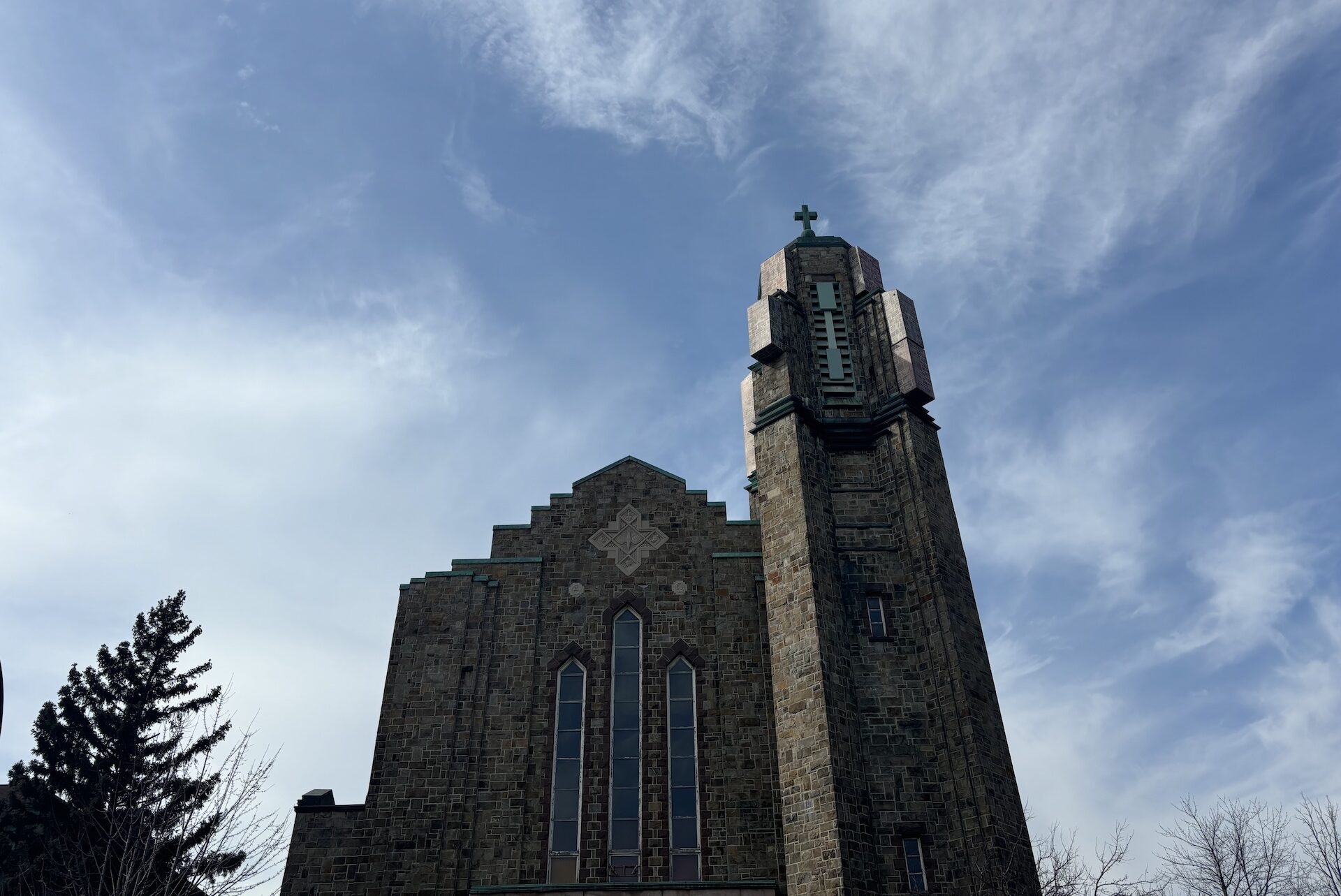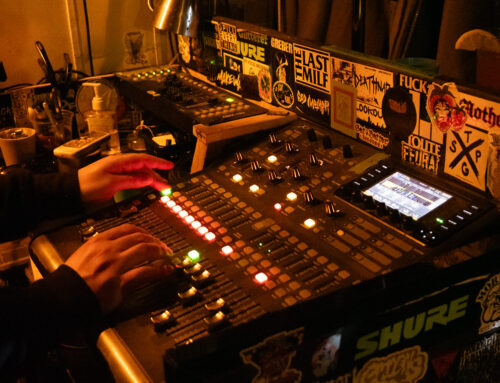BY victoria blanchette & joy benyamin
Lucie Dion knows the St-Jean Berchmans parish in Montreal’s Petite-Patrie neighbourhood well. She has lived near the parish for over 60 years, and now works as a churchwarden overseeing financial commitments of the church.
She says the money the church receives from the government is not enough to cover vital renovations.
“People come less and give less, which is normal. The cost of living has changed,” she says.
Laude Archambault, the accountant working for St-Jean Berchmans since 2003 estimates that they need between $250,000 and $300,000 for the renovations. In order to increase funds, the church must either rent out rooms or host activities.
“At the parish level, the income from lodging represents more than 50 per cent of our income. I would say that about 25 percent comes from religious activities. The rest are different types of activities,” he says.
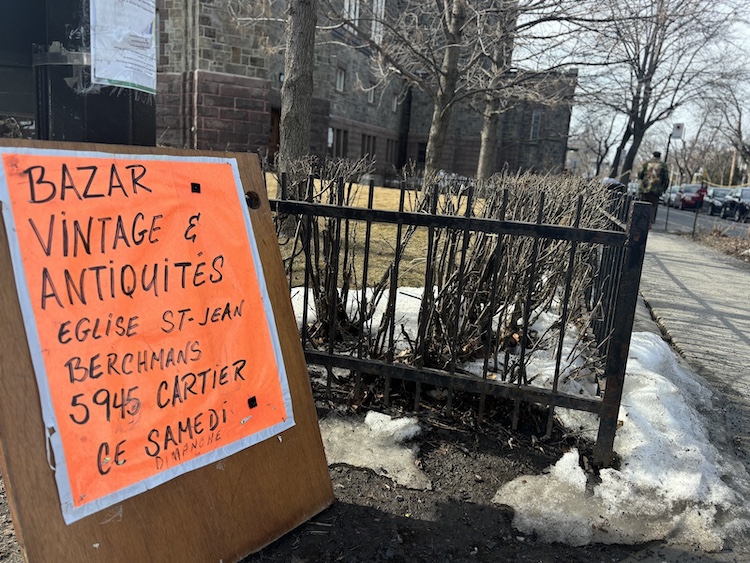
Picture of a sign in front of the church advertising the bazar. Photo by Victoria Blanchette.
In order to keep the St-Jean Berchmans church afloat, the staff is ready to do just about anything to bring in money.
“We help pretty much everyone; we’re not just targeting Catholics,” says Melvin Martin, the church manager. “I’ve already rented to Hindus, Buddhists; we have an open-minded approach. If the building can serve a purpose without focusing on religion, why not?”
Recently, they resorted to renting out one of their biggest rooms to a vintage bazaar.
On the saturday of the bazaar, Monique Pilon, a vendor at the event gathered her nicest silks and tablecloths at her stand. She didn’t know this event was being used as a way to make money for the church, but either way, was not surprised.
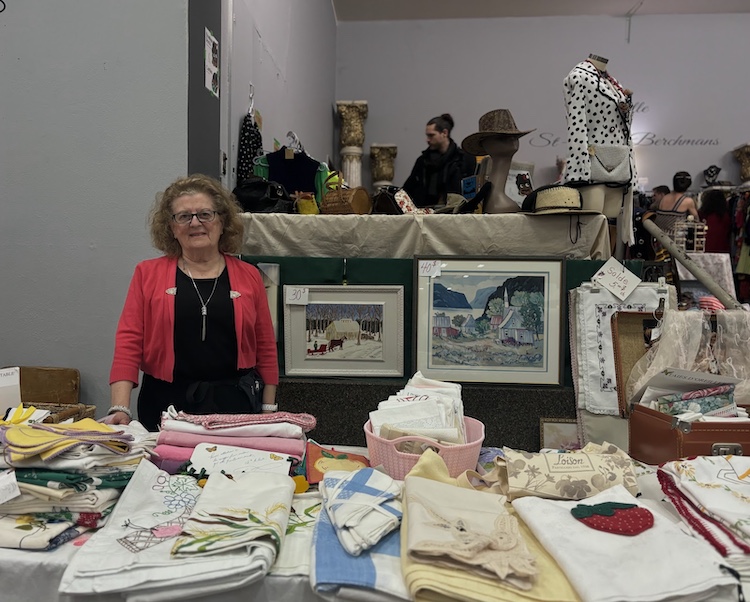
Picture of Monique Pilon, a seller at the bazar, in front of her stand. Photo by Victoria Blanchette.
“We used to bring our children to church, but our children no longer go to church for personal reasons. There are only older people,” she says.
Colin Pratte, from the IRIS Research Institute says the government giving money to churches can be beneficial if it is for secular activities.
“We could imagine a public program for maintaining places of worship, conditional on hosting social, cultural, and community activities, specifically the rental of certain spaces to civil society organizations,” he says.
Pratte emphasizes that because of the rise in the cost of living, it is becoming hard for everyone to find places either for their businesses or even housing. Churches could provide solutions to that with the help of government funding.
“In Montreal, for example, it is becoming increasingly difficult for community organizations to find affordable spaces, and they are turning to places of worship,” he says. “Therefore, the disappearance of churches has implications beyond just religious ones.”
Right now provincial grants are nowhere near enough to maintain the hundreds of churches across the city. In fact, even landmarks such as the Notre-Dame Basilica do not receive the necessary funds to stay afloat.
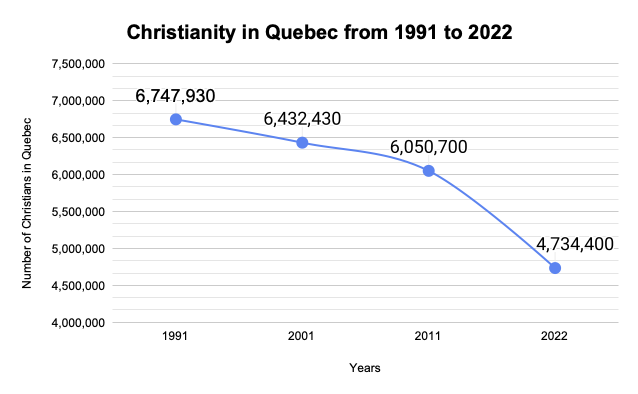
. Statistics showing the number of christians in Quebec from 1991 to 2022. Photo by Victoria Blanchette
Mathieu Verrault, the director of tourist affairs at the Notre Dame Basilica, believes that churches have no option but to spend their budget carefully.
“We manage by being very financially rigorous”, he says.
A look into churches in transition. Video by Joy Benyamin.
Quebec’s Council of Religious Heritage has an annual budget of 20 million dollars which is divided between more than 2,700 churches across the province. But the Basilica alone is facing $50 million in renovations. Smaller churches who need basic renovations, such as the St-Jean Baptiste church, face costs of $300,000.
Not only are most churches struggling to find the funds to renovate the crumbling stones, fading paint, and the foundations of these centuries old buildings, but they are also in a race against time.
Churches struggle due to minimal attendance and expensive maintenance costs. Pew Research Center estimates that between 1986 and 2011 the population of Quebec going to church dropped to 17 percent from roughly 50 percent. Today, only about 4 percent attend mass weekly.
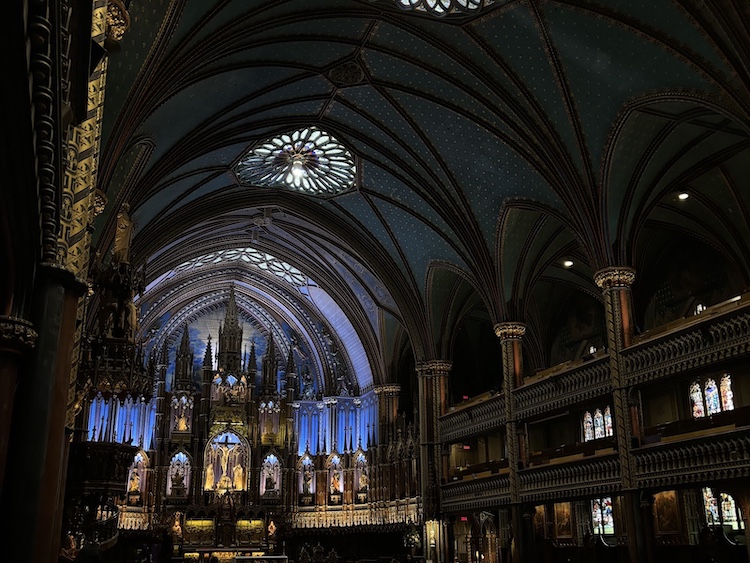
Image of the inside of the Notre Dame Basilica in Montreal. Photo by Victoria Blanchette.
Merit Shokry, a Montreal architect, says there are fewer people going to church but insists it is still necessary to preserve them as part of our culture and heritage.
“We need to preserve them, even if the church is not full. I believe the churches have huge value on our territory,” she says.
Shokry feels however, that the government is not doing enough.
“For sure the government is decreasing their funds because for them it’s just a building at the end of the day,” she says.
Quebec has over 700 fewer churches today than in 2003. The numbers will continue to decline without large amounts of new money from the government or other sources.
